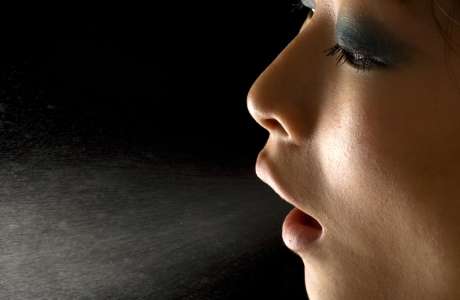Researchers look to breath to identify stress

(Phys.org)—The perennial stress-buster—a deep breath—could become stress-detector, claims a team of researchers from the UK.
According to a new pilot study, published today, 28 February, in the Journal of Breath Research, there are six markers in the breath that could be candidates for use as indicators of stress.
The researchers hope that findings such as these could lead to a quick, simple and non-invasive test for measuring stress; however, the study, which involved just 22 subjects, would need to be scaled-up to include more people, over a wider range of ages and in more "normal" settings, before any concrete conclusions can be made, they state.
Lead-author of the study, Professor Paul Thomas, said: "If we can measure stress objectively in a non-invasive way, then it may benefit patients and vulnerable people in long-term care who find it difficult to disclose stress responses to their carers, such as those suffering from Alzheimer's."
The study, undertaken by researchers at Loughborough University and Imperial College London, involved 22 young adults (10 male and 12 female) who each took part in two sessions: in the first, they were asked to sit comfortably and listen to non-stressful music; in the second, they were asked to perform a common mental arithmetic test that has been designed to induce stress.
A breath test was taken before and after each session, whilst heart-rates and blood pressures were recorded throughout. The breath samples were examined using a technique known as gas chromatography-mass spectrometry, and then statistically analysed and compared to a library of compounds.
Two compounds in the breath – 2-methyl, pentadecane and indole – increased following the stress exercise which, if confirmed, the researchers believe could form the basis of a rapid test.
A further four compounds were shown to decrease with stress, which could be due to changes in breathing patterns.
"What is clear from this study is that we were not able to discount stress. It seems sensible and prudent to test this work with more people over a range of ages in more normal settings.
"We will need to think carefully about experimental design in order to explore this potential relationship further as there are ethical issues to consider when deliberately placing volunteers under stress. Any follow up study would need to be led by experts in stress," Professor Thomas continued.
Breath profiling has become an attractive diagnostic method for clinicians, and recently researchers have found biomarkers associated with tuberculosis, multiple cancers, pulmonary disease and asthma. It is still unclear how to best manage external factors, such as diet, environment and exercise, which can affect a person's breath sample.
"It is possible that stress markers in the breath could mask or confound other key compounds that are used to diagnose a certain disease or condition, so it is important that these are accounted for," said Professor Thomas.
The researcher's initial assumptions are that stressed people breathe faster and have increased pulse rates and an elevated blood-pressure, which is likely to change their breath profile. They emphasise, however, that it is too soon to postulate the biological origins and the roles of the compounds as part of a stress-sensitive response.
More information: "The effect of paced auditory serial addition test (PASAT) intervention on the profile of volatile organic compounds in human breath: a pilot study" J. Breath Res. 7 017102. iopscience.iop.org/1752-7163/7/1/017102
Journal information: Journal of Breath Research
Provided by Institute of Physics














